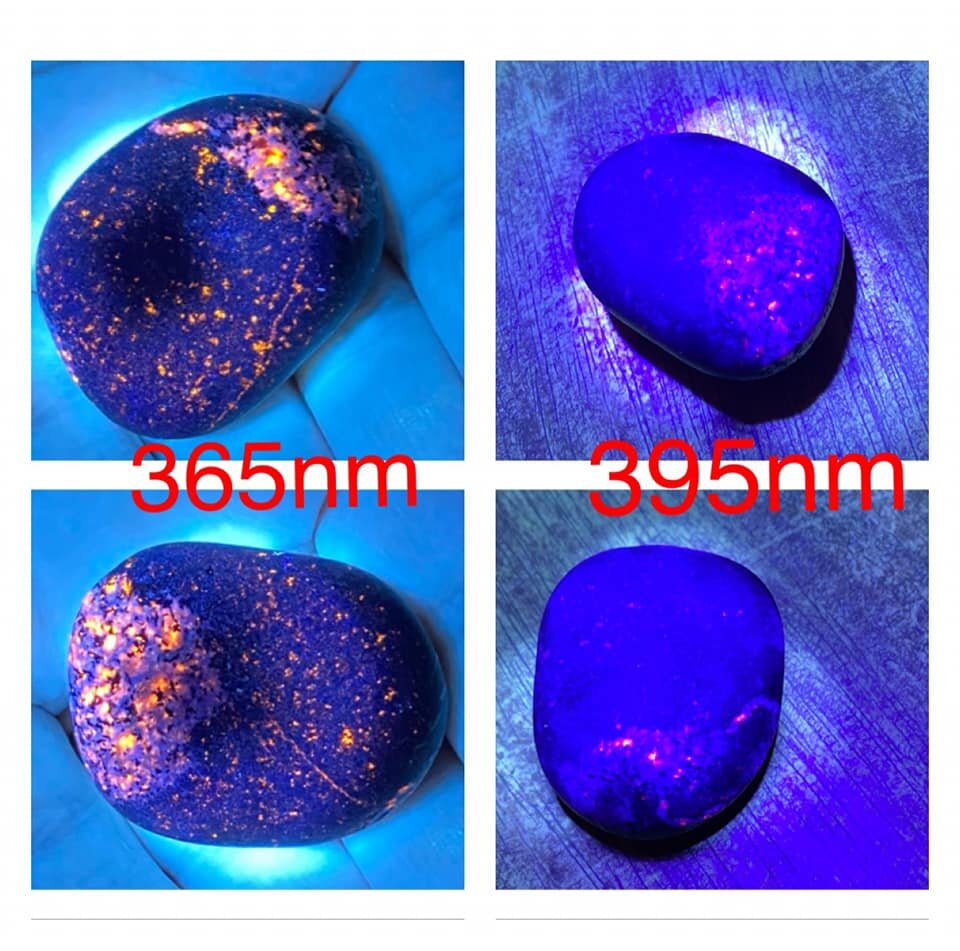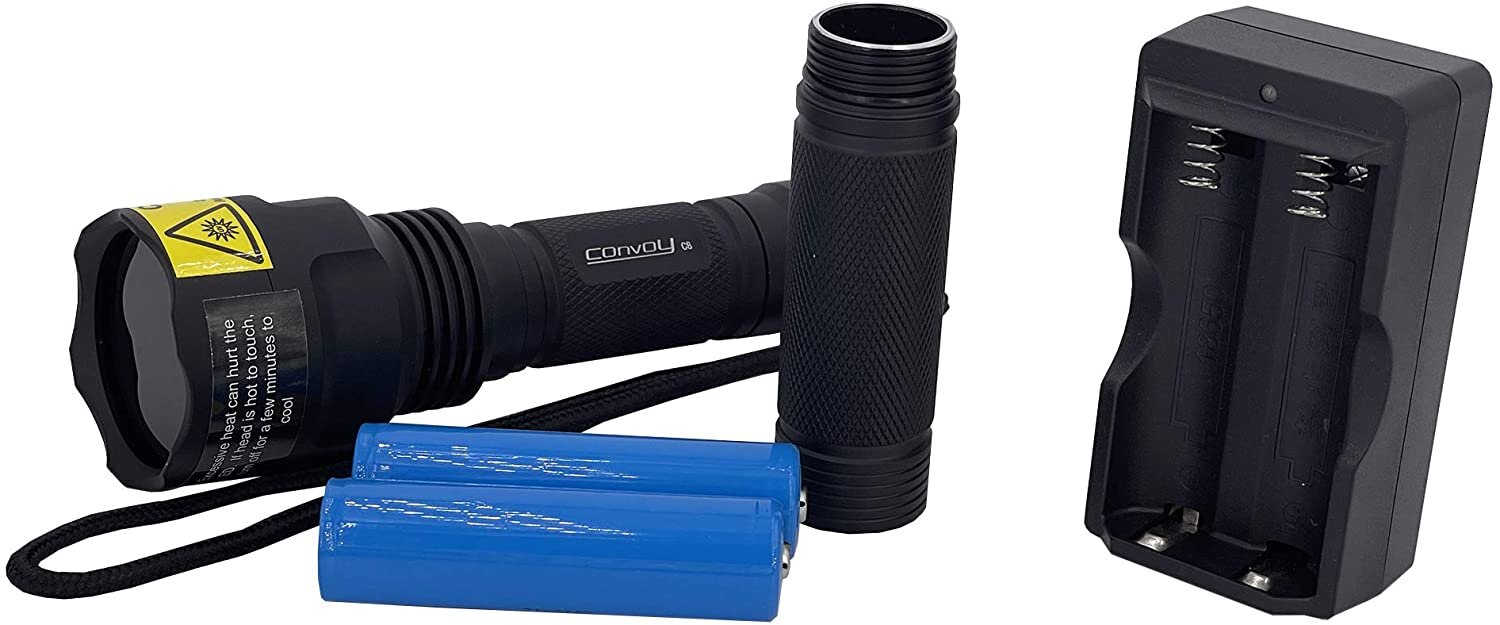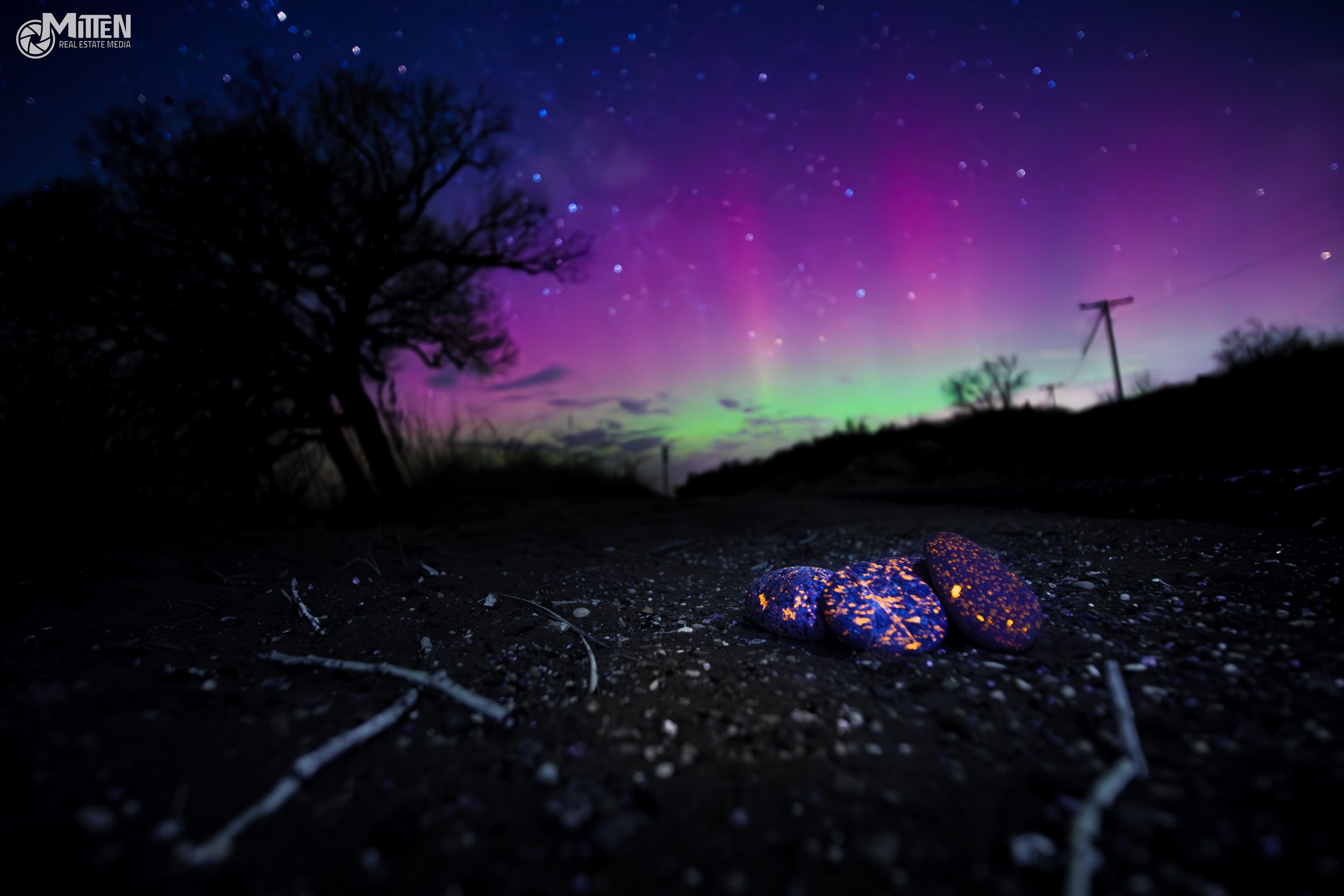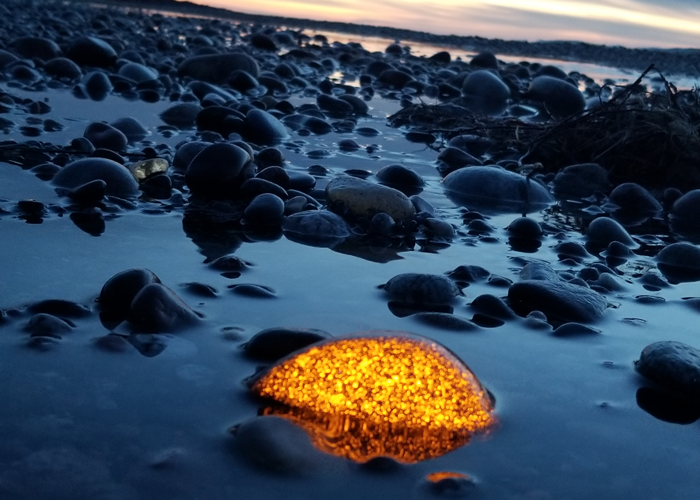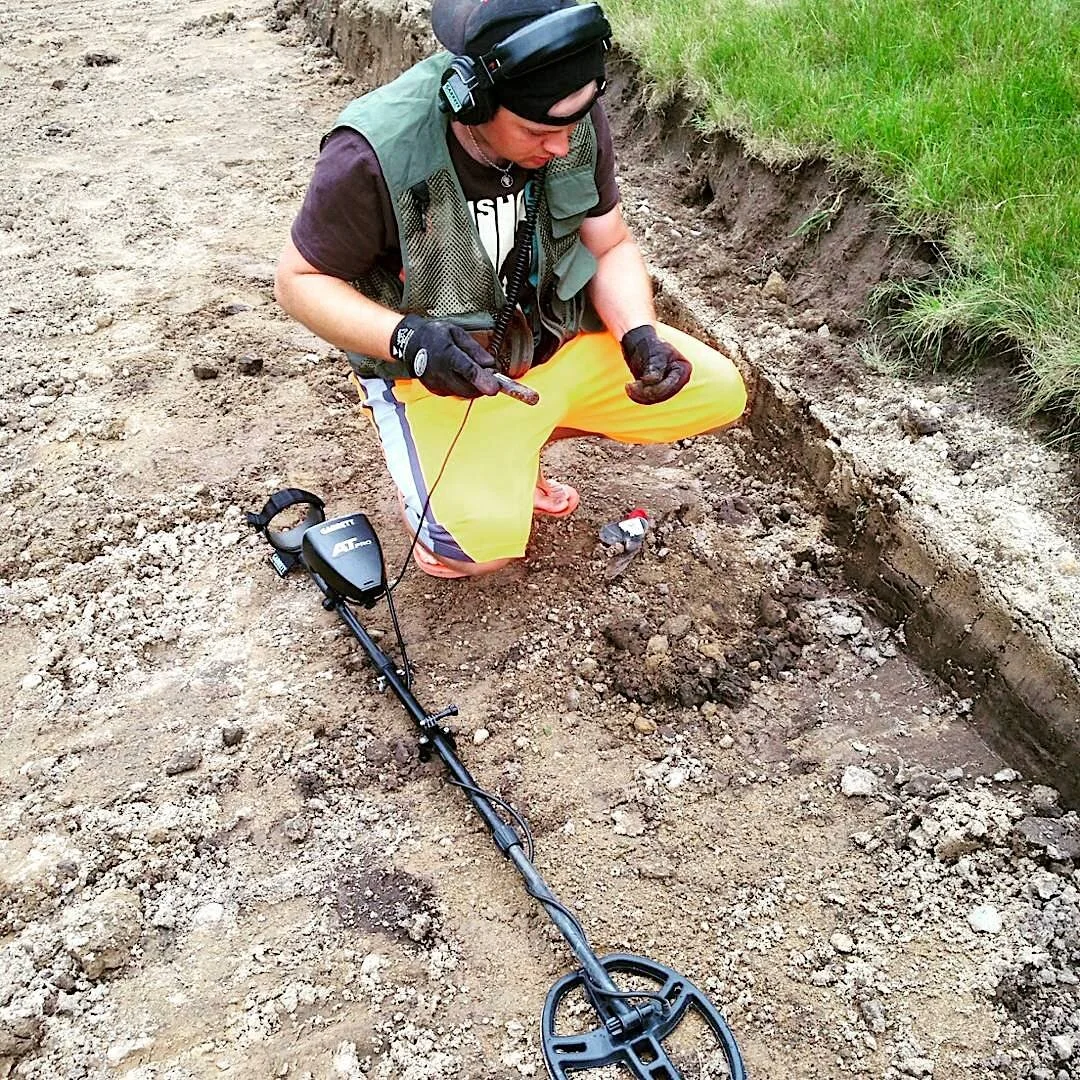Yooperlites: How & Where To Find Them
What Is A Yooperlite?
One of the coolest rocks you could ever find is the Yooperlite!
A “gem” that was first discovered by Erik Rintamaki along the Michigan shores of Lake Superior in 2017, Yooperlites are a Syenite rock that contain a highly fluorescent Sodalite throughout the mineral, causing them to glow a bright, campfire-coal orange and can only be seen when using UV light.
These rocks are something you truly have to see in person to appreciate and admire!
**DISCLAIMER - As an Amazon Associate I earn from qualifying purchases. The links in the article are affiliate links that help support this blog and my channels. Metal Detecting Life is supported by you, the readers! When you purchase something I recommend via my links, I may get an affiliate commission (terms of service) — but it never affects the price you pay. Cheers!
Equipment Needed To Find Yooperlites
Anyone hoping to just walk down the beach and pick up a Yooperlite during the middle of the day is certainly dreaming. That is because Yooperlites look just like the thousands of other gray and dark stones in broad daylight that are lining the beach.
Yooperlite in natural light vs 365nm UV light.
To be sure you’ve found a Yooperlite, you’ll need some special equipment in order to see them. The most important piece of equipment of course being a UV flashlight.
It is important to use a UV light that is rated (365nm) will increase your odds of finding a Yooperlite rock tenfold because it is the UV waves that react with the fluorescent Sodalite, giving the rocks that brilliant, orange, campfire-coal glow that Yooperlites are famous for.
DO NOT GET A UV LIGHT RATED 395nm FOR YOOPERLITE HUNTING. You can see the brilliance and comparison between to two wave lengths in the photo below.
Photo Credit: Christina M. McClure
Recommended 365nm UV Lights
Top Of The Line UV Light
The Convoy C8 is highly regarded as the go-to light when looking for Yooperlites. Just ask Erik, as this is the light he himself uses and strongly recommends to any other aspiring Yooperlite hunter out there! The secret may lie within the patented glass filter that allows the majority of UV to pass through, but absorbs other visible light. For this reason, it makes the reactive material on Yooperlites really pop out as the UV light hits them.
Middle Of The Pack UV Light
The uvBeast V3 would be a great - middle of the pack UV light for anyone looking to kick off their Yooperlite hunting career and have a light that will compete with the rest. This 365nm light comes with triple LEDs that allows for long-range light transmission up to 60ft.
Ultimate Value UV Light
The Alonefire SV47 12W is actually the UV flashlight that I would recommend and is perfect for someone looking for a light that won’t break the bank. It performs with even the the BEST UV lights on the market! It is rechargeable via USB-C cable (included) and currently also comes with a pair of UV Protective Glasses!
Other Yooperlite Accessories
One item to consider using alongside your UV light when searching for Yooperlites would be a pair of UV light safety glasses. These will help protect your eyes from the harmful wavelengths produced by UV. Never look directly into a UV flashlight!
Using UV safety glasses like these while searching for Yooperlites can help reduce the risk of eye fatigue or damage from the UV spectrum.
Lets face it, none of us are getting any younger and having a tool to help extend your time out rock hunting is always a welcomed sight. Having a rock scoop that will keep you from constantly bending over or squatting down to get a better look at those beauties below your feet is a great addition to any rockhound’s arsenal.
This rock scoop is lightweight & compact with a collapsible aluminum body, cork-rubber handle, strap & stainless steel basket that makes beachcombing easy on the back.
The Sand Dipper rock scoop has a telescoping shaft that can extend all the way out to 64-inches which can allow you to reach out in to the water without getting your feet wet for those hard to get rocks. Also great for travel as it will pack down to just 22.5-inches when broken all the way down. BONUS TIP - unscrew the mesh basket and you’ll have the perfect walking/hiking pole!
A mesh backpack like this is a great way to store your finds while rockhounding.
Finally, make sure to have a small bag or backpack to carry any Yooperlites you happen to find along the way. Nobody wants to lose their treasures because of a hole in their pocket!
I personally use a drawstring mesh backpack which allows any sand to fall out as I collect rocks and walk along. This also helps dry out any wet rocks as the air flows through the mesh liner.
Plus, any other rockhounds hunting that happen to be following me and shine my back with their light will marvel at all the gems I’ve found!
Extra equipment to consider bringing when searching for Yooperlites:
White LED headlamp
Waterproof footware
Light rain jacket or poncho
Bug spray
Bottled water
Snacks
Glow sticks
Walkie talkies
Safety whistle
Where To Find Yooperlites
With the glaciers pushing and spreading sediment all across North America, it is possible Yooperlites could be found almost anywhere. However, with the first documented discovery of Yooperlites occurring in Michigan’s Upper Peninsula, one can certainly have a great chance at finding them between Whitefish Point (restrictions on rock collecting) and Grand Marais.
Erik, the Yooperlite founder, has also reported traveling to Minnesota and searching various gravel pits, unearthing the unique rock there with success, while other reports of Yooperlites being found have come from several spots along the Lake Michigan shoreline, some even being as far south as Chicago!
*Legal Disclaimer - When rockhounding in the State of Michigan, the DNR (section “hh”) allows an individual to remove up to 25lbs per year of any rock, mineral specimen, or invertebrate fossil from State owned lands.
Search At Night
Yooperlites taking in the view of the Mackinac Bridge. Photo Credit: Doug Julian
Since it takes using a UV light to help discover and locate Yooperlites, searching from dusk to dawn will always yield the best results. It is also an added benefit to go hunting for the glowing rocks while there is no moon or stars. The light of the moon can drowned out your UV flashlight, rendering it almost useless.
You can find all sorts of “lites” when searching at night including Yooperlites and even the Northern Lights. Photo Credit: Ace Covey - Mitten Real Estate Media
Hunting under cloudy skies can help increase the odds of seeing the UV light bounce off a Yooperlite because not only will the beam of light be stronger, but your eyes will not need to adjust as much from the interference of the moonlight.
Search In The Water
Lake Superior is known for it’s rocky bottom and stoned-lined beaches. Most of these rocks were brought down from Canadian glaciers centuries ago and deposited throughout the lake and shore, which has made the Northern Michigan shoreline a haven for rockhounds.
This means that Yooperlites could be hidden just offshore amongst all the other rocks that are being brought up by the waves and surf.
If you do plan on searching the water for Yooperlites, make sure that your UV light is waterproof and that you are prepared for the extremely cold water as the average temperature of Lake Superior is a mere 40 degrees Fahrenheit, with the warmest being in August at around 65F.
Best Time Of Year To Search
Erik searches the shoreline as the ice pushed new rocks along it. Photo Credit: Doug Julian
The best time of year to search for Yooperlites is in the Fall and early Winter as the storms and waves that are produced by Lake Superior create a turbulent force that can alter the beach and shoreline on a daily basis. This is the “perfect storm” for rockhounds because every trip back to a location during this time is like hunting a brand new beach.
It could mean that rocks that were sitting 20 yards offshore one night are now thrown 10 yards up on to the beach. Likewise, rocks that have been buried 4ft down on the beach could be revealed as waves pound the shore and strip the beach, removing rocks and bringing them back in to the water.
A Yooperlite is spotted right as the sun has set. Photo Credit: Erik Rintamaki
Early Spring is also a great time to search for Yooperlites because the frozen lake ice pushes against the shore and causes a good amount of erosion, exposing new rock layers to search. Spring is also a desirable time because there are a lack of mosquitos and flies attaching you and the weather is a bit more tolerable than the latter parts of the season.
Search With A Pro
Erik Rintemaki is Mr. Yooperlite himself!
For anyone that knows nothing about rocks, let alone Yooperlites, fear not! You can book a Yooperlite Guided Tour should you find yourself in Michigan’s Upper Peninsula.
That’s right! Erik, the Godfather of Yooperlites takes groups of people out to some of his top secret hunting areas that have produced amazing Yooperlite specimens! If you do book a tour, tell him Ace from Swing4TheRing sent you!
Erik has even created some amazing custom jewelry pieces from Yooperlites that have been found!
A tour is a great option for family outings, reunions, boy/girl scout trips, date night, or even a bachelor/bachelorette party. Be sure to book a spot soon as Yooperlite tours have sold out every year!
Are You A Rockhound?
*As an Amazon Associate I earn from qualifying purchases.




